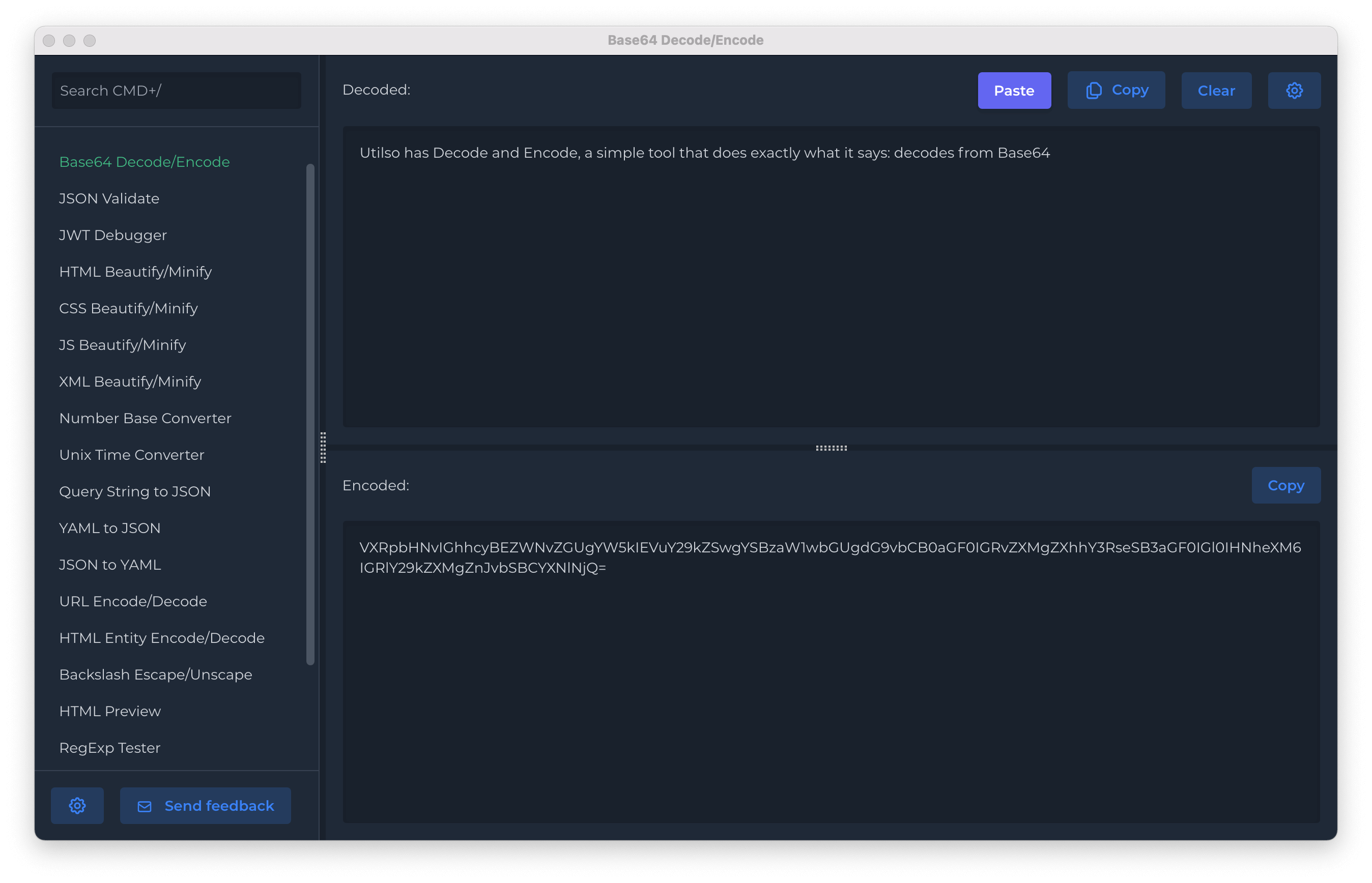
Base64 Decode & Encode
Convert completely offline
Utilso has Decode and Encode, a simple tool that does exactly what
it says: decodes from Base64 encoding as well as encodes into it
quickly and easily. Base64 encode your data without hassles or
decode it into a human-readable format.
Base64 encoding schemes are commonly used when there is a need to encode binary data, especially when that data needs to be stored and transferred over media that are designed to deal with text. This encoding helps to ensure that the data remains intact without modification during transport. Base64 is used commonly in a number of applications including email via MIME, as well as storing complex data in XML or JSON.
Base64 encoding schemes are commonly used when there is a need to encode binary data, especially when that data needs to be stored and transferred over media that are designed to deal with text. This encoding helps to ensure that the data remains intact without modification during transport. Base64 is used commonly in a number of applications including email via MIME, as well as storing complex data in XML or JSON.


What is base64?
The term Base64 is coming from a certain MIME content transfer encoding. Basically, Base64 is a collection of related encoding designs which represent the binary information in ASCII format by converting it into a base64 representation.Base64 encoding schemes are generally used when there is a need to encode binary information that needs to be stored and transferred over media that are developed to deal with textual information. This guarantees that the data stays unchanged without modification during transfer. Base64 is generally used in a number of applications including electronic mail via MIME, and keeping complex information in XML.
The specific set of characters chosen for the 64 characters needed for the base can vary among implementations. The common concept is to select a set of 64 characters that is both part of a subset typical to most encodings. This mixture leaves the data impossible to be altered in transportation thru information systems, such as electronic mail, that were typically not 8-bit clean. The Base64 implementation in MIME uses a-z, A-Z and 0-9 for the first 62 values. Other Base64 variations share the same property but they use different symbols in the last two values.
Download for Windows